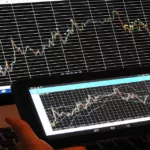NASA’s Mars Curiosity rover recently concluded a series of preparatory tests designed to calibrate precision movements by the rover’s robotic arm which is used to deploy a wide variety of tools.
The checks also confirmed that the Mars Hand Lens Imager, or MAHLI, was fully functioning and ready to explore more of the Red Planet.

“MAHLI took an image with its re-closable dust cover open for the first time on Mars, confirming sharp imaging capability that had been obscured by a thin film of dust on the cover during previous use of the camera,” said MAHLI Principal Investigator Ken Edgett of Malin Space Science Systems, San Diego.
”It took images of cameras at the top of Curiosity’s mast, of the underbelly of the rover and of MAHLI’s own calibration target, among other pointings. It is so exciting to see the camera returning beautiful, sharp images from Mars.”
The camera’s calibration target includes a 1909 Lincoln penny that Edgett purchased for this specific purpose.
“We’re seeing the penny in the foreground and, looking past it, a setting I’m sure the people who minted these coins never imagined,” he added.
The penny is a nod to geologists’ tradition of placing a coin or other object of known scale as a size reference in close-up photographs of rocks, and it gives the public a familiar object for perceiving size easily when it will be viewed by MAHLI on Mars.

“The folks who drive the rover’s arm and turret have taken a 220-pound arm through some very complex tai chi, to center a penny in an image that’s only a few centimeters across,” explained MAHLI Deputy Principal Investigator Aileen Yingst of the Tucson-based Planetary Science Institute. “They make the impossible look easy.”
The arm characterization activities, including more imaging by MAHLI, will continue for a few days before Curiosity resumes driving toward a mid-term science destination area called Glenelg. There, the rover will attempt to use its scoop to collect a soil sample and subsequently drill to collect a sample of powder from inside a rock.
Curiosity is five weeks into a two-year prime mission on Mars. It is slated to use a total of 10 science instruments to assess whether the selected study area has ever offered environmental conditions that could be considered favorable for the existence of microbial life.





